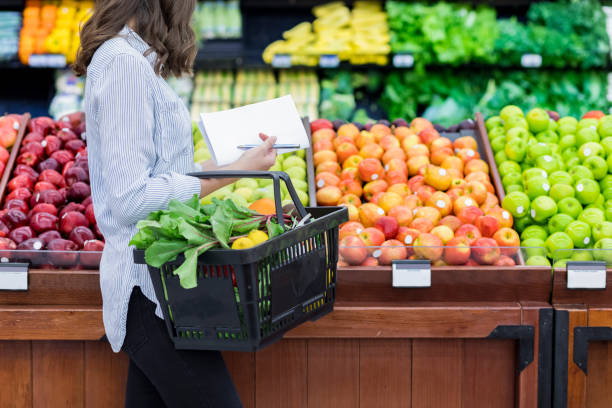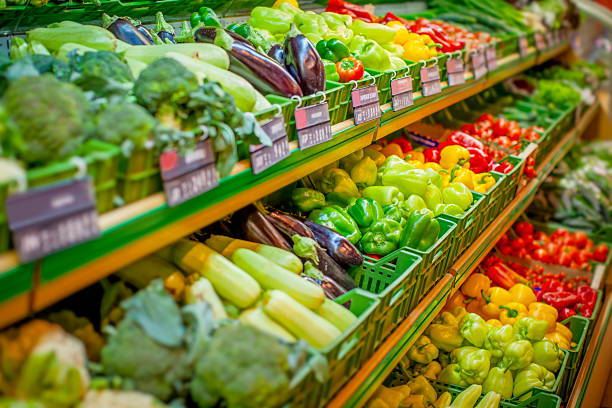Will Food Prices Decline in 2023? Analyzing the Future of Food Prices
Lines of credit might help countries and small enterprises alike lessen the financial effects of increasing food costs. We must first take a closer look at the two main factors that affect food pricing: macroeconomic trends and local/regional microeconomic circumstances, in order to fully comprehend how these lines of credit are able to do this.
International markets are shaped by macroeconomic trends, and when demand or costs exceed the market's capacity, lines of credit may be useful in supplying the required money. In a more limited sense, lines of credit could help those who shop locally for food by providing financial support when crop production levels are low or unforeseen needs emerge.
The macroeconomic factors that have the most effects on food costs include GDP growth, inflation, changes in currency exchange rates, and world commodity prices. As a consequence, there may be adjustments to supermarket costs, including an increase in the price of basic foods like rice and wheat. Prices might change on a regional or local level due to microeconomic variables including weather, soil quality, insect infestations, and irrigation expenditures.
Food Prices at Present
Food price inflation has historically been between 3 and 4%, however beginning August 2019, the trend of increasing food prices has accelerated. The FAO Food Price Index increased 4.3% in August 2020 compared to the same month the previous year, according to the United Nations Food and Agriculture Organization (FAO), and this rise is anticipated to continue through 2023. These two essential components of a well-balanced diet, rising pricing for dairy products and vegetable oils, may be substantially blamed for this huge increase. Smart shoppers should keep a watch on the price of these and other food categories to make the most of their finances, since additional hikes are predicted in the near future.
Reduced supply as a consequence of poor weather in Europe and South America, increased demand from Asia due to population growth, and greater global shipping costs as a result of the COVID-19 pandemic are all factors that have an impact on the price of food globally.
Are there any indications that food prices may decline in 2023?
Even if we can wish for a drop in food prices in 2023, it is expected that present patterns will most likely result in additional rises. Recent high increases in food prices have been caused by a number of causes, including climatic circumstances, geopolitical tensions, and global trade disputes. By 2023, they may still be upsetting supply networks and cause little change or perhaps an increase in costs.
On the other hand, it is feasible that the price of food might stay comparatively steady or even decrease if global economic circumstances were to improve or if the rise of world demand slowed. Only time will tell what transpires over the next three years.
Mitigating Factors That Could Affect Food Prices By 2023
Predictions indicate that unless global economic circumstances improve or geopolitical crises abate, food prices are likely to rise during the next three years. Climate change, geopolitical tensions, and global trade disputes are factors that are already pushing prices up; if any of these factors worsens, it may have an influence on anticipated patterns in food cost. It is vital to underline that action must be made now in order to stop additional rises and make declines a more probable reality. Food prices may drop in 2023 if certain elements shift direction or become more stable.
Climate Change
Global food production and consumption are being severely disrupted by climate change, which is driving up consumer costs everywhere. Due to lower crop yields brought on by harsh weather events, we are seeing a sharp rise in the price of basic goods like wheat as well as a decline in the supply of fresh vegetables. These occurrences also have a role in long-term issues like drought and heat waves, which increase strain on food supply and raise consumer price index levels.
Globally, the effects of climate change are being felt, which has a negative economic impact on nations with populations that may already be weak or unstable. To secure the stability of future global food prices, it is becoming more and more crucial to take steps to minimize our carbon footprint via sustainable agriculture and other methods.
The COVID-19 Pandemic's Effect on Food Prices
The continuing COVID-19 pandemic's impact on global food supply chains have had a significant knock-on effect on food prices all around the globe. At first, the unexpected implementation of lockdown limitations increased the cost of transportation, pushing up the price of commodities like grains, oils and fats, and dairy goods.
In certain circumstances, shortages and hoarding have occurred as a consequence of manufacturers and merchants' inability to supply the persistently high demand. Staples are becoming more expensive as a result of these continuing supply chain problems since global demand is always outstripping global production capacity.
The Effect of Technology on the Food Industry
Thanks to a spike in technical advancements and creativity, the food business has seen a notable change in recent years. From farm-to-table systems to automated indoor farming technologies, many of these advancements have increased the traceability and efficiency of food production. This improved efficiency often results in cheaper costs for food producers, which lowers food prices for consumers throughout the world.
Some technologies are even assisting food producers in increasing crop yields and producing high-quality food more consistently. Whether it's automation, data analysis, or something else, technology improvements are predicted to have a significant impact on food pricing in the future. These innovations will also continue to enhance the capacity for food production and delivery.
Food inflation is still a worry for everyone in the globe, especially as food costs continue to rise. Despite this fact, it is practically difficult to forecast with accuracy when food prices will rise. This is because food costs are complicated and are influenced by a variety of external factors, such as economic expansion, technical advancements, climate change, and geopolitical developments.
Although it is impossible to predict with certainty if food costs will decrease in 2023 or in any other year, it is important to consider the potential effects that these factors may have. As a result, it is important to remember that a number of mitigating variables might cause food costs to unexpectedly decline in the future, therefore keeping a watch on world events is crucial for comprehending food pricing outlooks.
To know more about Food Prices in 2023, be sure to read this blog post from Farm Plus Financial: https://farmloans.com/general-farm-news/will-food-prices-go-down-in-2023-evaluating-the-future-of-food-prices/



